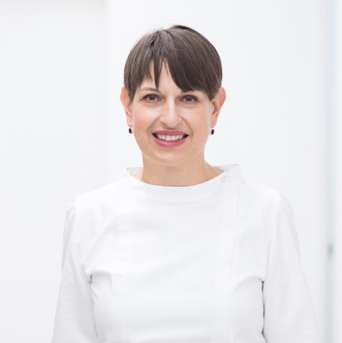We as dentists usually really love what we do and gain great satisfaction from helping patients and providing great service. Since we are in our dental offices every day, treating our patients, sometimes we do not realize that a majority of the people who come to us are very anxious about their procedures.
You have probably, as I did (sometimes even a few times in one day) heard the sentence “I don’t like coming to you, not that I don’t like you as a person, but I don’t like what you do”. We can agree that few people come to our offices willingly and as relaxed as if they were going to a spa. Most of them are anxious to some degree and if we manage to free them at least partially from that initial fear, then we know we are on our way to completing our treatment successfully.
Every patient coming to our office is nervous in some way: from expectations of pain to fear about the cost of the treatment. This is a fact and also something that nobody told me when I applied to the School of Dental Medicine :-). We deal on a daily basis with people who are stressed to some degree and we as professionals have to absorb and transmute that fear in order to provide successful treatment and have happy patients in the end. But how can we do that?
1. Interiors
In my office I prefer light pastel colors that have a calming effect and furniture that is comfortable with no sharp edges especially in the waiting room, where there is also preferably some soft music playing that creates a peaceful mood. In my dental office, there is a TV set on the ceiling that patients spot the moment they lie back in the chair. Although not many patients actually watch TV when in the chair, it still switches their focus from fear to something else and relaxes them.
2. Team approach
Everything is important: From the moment a patient calls, he or she needs to hear a friendly voice on the phone; when he or she walks in to the clinic there has to be a friendly face at the front desk; the dental assistant who brings the patient into the surgery needs to be kind and pleasant when preparing the patient for a procedure.
3.The doctor
And now for the doctor: if all the previous steps have been taken correctly, we already have a patient who is less anxious than when entering our office. Our job as a doctor, besides giving our patient the best possible treatment, is to be as kind and pleasant as possible, and convey a sense of confidence, which works much better than any pill we can prescribe. That way the patient relaxes and sort of “surrenders” to our hand and our procedures.
4. Local anesthesia
I always ask my patients if they want an anesthetic, for any treatment. If I’m sure that the procedure will be painful, I insist on giving them anesthesia, but most other times I let them choose, because some are intimidated by a needle, and others ask for an injection even for almost painless procedures because it gives them a sense of security. IMHO, the best patient to treat is a relaxed and calm patient so I do everything in my power to relax them.
5. Medication
In my 20+ years of practice I have very rarely, if ever, prescribed medicine to anxious patients. If I give them medication before treatment it is usually a benzodiazepine kind of medicine, usually 5 mg diazepam that I prescribe to be taken approx. 1/2 hour before the procedure. But that is, as I said, very rare, even with patients going through surgical procedures like placing implants or the All-on-4® treatment concept.
Almost every patient who comes to our offices experiences anxiety to a certain degree and we are all used to dealing with it on a daily basis. The goal is to relax our patients and to make unpleasant treatments more pleasant or at least less unpleasant. We can do that through calming and relaxing interiors, especially in the waiting room where patients sometimes spend some time before the procedure.
Above all that, IMHO, the most important thing is a friendly team approach from all of the staff, a relaxed atmosphere, even a few jokes, everything that makes the patient forget for a moment where he or she really is. Another very important aspect of all this is to gradually build an atmosphere of trust between the patient and the staff including the doctor, because it is our engagement with the patient that makes them trust us. If we manage that then we are already half-way to success before we have even started the treatment.
I’m grateful to be able to share some of my experiences from daily practice as a dental professional with this community. I hope you find it inspiring and helpful in your own daily practice. If you have any further questions, feel free to write to me at branka.bilan@zd.t-com.hr.
Interested in dental practice management? Discover our flexible online Dental Practice Management course!
Related article:






